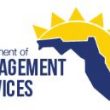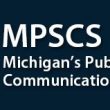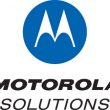Coming to America: TETRA-one way or another
‘Project 25 TETRA’
The Project 25 Steering Committee voted in November 1999 to accept a four-slot TDMA proposal from the TETRA MoU to use TETRA as the baseline for a new Project 25 four-slot TDMA standard. They also accepted a separate two-slot TDMA technology proposal from Com-Net Ericsson to use as a baseline for a new two-slot TDMA proposal. If and when Project 25 incorporates a four-slot TDMA standard, "it will meet the needs of the majority of the North American public safety users, which means it will have a compliant interoperability mode," said Craig Jorgensen, co-chairman of the Project 25 Steering Committee. To fit Project 25's requirements, the baseline TDMA proposal, among other things, must be modified to include a different vocoder (the device that converts voice to binary code) and different encryption algorithms for greater compatibility with existing Project 25 FDMA standards for 12.5kHz channels.
All Project 25 standards, including the vocoder, encryption and common air interface, must have interoperability. Other technology changes may be recommended and approved as the standards process moves forward.
Some call the modification "P25 TETRA," but that's not an official Project 25 term. Through current TIA subcommittee work, a four-slot TDMA TETRA-based specification will become part of the TIA standards. If IPR cross-licensing follows, some manufacturers might make P25 four-slot TDMA equipment specifically for North America. What would be lost, though, is part of the economy of scale of a single, worldwide TETRA.
Some call the existing TETRA standard "native TETRA." Parallel to their Project 25 four-slot TDMA work, these native TETRA proponents are ushering native TETRA through the TIA baseline reference to existing ETSI documentation, into the TIA standards documentation framework. Meetings have been scheduled that are intended to lead to a TIA membership vote on a native TETRA standard by early next year.
The TIA project description suggests that the P25 four-slot TDMA specification may be available by the end of 2001. A Motorola representative estimated the process might take two to four years, however.
Jorgensen estimated four to six years at the current pace, adding, "The TIA standards process, as I understand it, is open, deliberative and evolutionary. It encourages its members and others to offer alternative technical standards proposals beyond those currently being deliberated. Those alternatives or recommendations can be proposed at any time during the process and must be given full consideration by each of the appropriate TIA groups. That means that throughout the process, the original proposed baseline can be modified and changed to better meet the needs of the North American public-safety users."
Many people are members of both the native TETRA and Project 25 committees. Separate meetings are held to minimize confusion regarding which standard is being discussed and to avoid the appearance that Project 25 steering committees themselves are having anything to do with the native TETRA standard. If native TETRA becomes a standard first, cross-licensing among IPR-holders could follow, and TETRA products might be sold in North America in a year's time.
Finding frequencies would be challenging. At VHF highband and UHF, where new channels are assigned at 12.5kHz bandwidths, a licensee would have to aggregate channels for a 25kHz bandwidth to fit native TETRA. Even when the FCC would allow such use, finding clear frequencies would be extremely difficult.
Interoperability
Large segments of the public-safety community want interoperability, and for many of them, interoperability means Project 25 technology. Native TETRA stimulates competition among manufacturers, which often leads to apparently lower prices, but it is not interoperable with Project 25 technology.
Jorgensen explained that the Project 25 standards have been based on the assumption that an agency would buy the technology that would best satisfy its operational and user requirements.
"In some cases that would, in fact, be a proprietary technology – say, an EDACS system. It may be a Project 25 standardized system. It could be a system like a TETRA or Matra or any other kind of technology. What should drive the acquisition of technology is not just that a standard is in place, but the needs of that specific community.
The Project 25 standards are predicated on the assumption that the needs fit the requirements of the standard, including interoperability, a backward migration path and a forward migration path – what we call a transparent migration path. It includes simulcast, direct mode and other uniquely public safety requirements.
If you don't have those needs, you shouldn't be spending money on that technology. You should spend it on the technology that best suits you," Jorgensen said.
"If and when a native TETRA is available in the United States and public safety agencies buy it, we would assume that they're making a decision based on what's best for them. We obviously support that decision because the individual public safety managers are in a far better position to make such a focused decision than we. Our standards shouldn't in any way be construed as attempting to limit people from using alternatives or implying that they should use alternatives. In fact, in every article and every commentary we've ever had with regard to Project 25, we tried to make that one point very clear: that people buy based on what their needs are," Jorgensen said.
As chairman of the United Telecom Council's utility wireless applications task force, Jerry Briggs said that the promise of interoperability motivates UTC to consider TETRA. Briggs is also a UTC board member and a transport technology manager for TXU, an electric and gas utility in Dallas.
"TETRA offers another choice to our members who thus far have been limited to proprietary systems from the `big three,'" Briggs said, referring to Motorola, Com-Net Ericsson and EF Johnson. "We are not saying that TETRA is better technologically, just that we want the additional choice."
Briggs also commented on the issue of interoperability as it relates to second-sourcing.
"TETRA is an open architecture with true interoperability. Any vendor's terminal units will operate on any other vendor's system. This introduces a degree of competition that we have not experienced in the United States. It will result in lower costs to the user," he said.
The interim chairman of the North American TETRA Forum, Mark Hoppe, said: "In areas where it's cost-prohibitive to provide a 700MHz or 800MHz solution independent of protocol, I think VHF Project 25 will be the solution. Another reason for Phase I VHF is because of heavy use by federal users with whom the local users must communicate. In some areas, that is very important for local users to have interoperability.
"Although the TIA process is important, it is not necessary for selling two-way radio products in the United States. SmartNet, SmartZone, IDEN, non-totally Project 25 compliant versions of Astro-none of those are TIA-approved. Yet, Motorola feels that TIA approval is necessary before TETRA is sold in the marketplace. It seems inconsistent with their own practice."
An SMR system operator for 15 years before selling his systems to Mobex, Al Duddles of Gem Communications in Boise, ID, later became Mobex's technologist. Retired, he continues to consult to Mobex and other clients.
"TETRA is spectrum-efficient and data-friendly. It has multiple manufacturers for infrastructure and subscriber units. Full-duplex subscriber units are available, which is important because many analog SMR equipment manufacturers have discontinued duplex units for lack of sufficient demand. Yet, with TETRA, worldwide demand for duplex units sustains their manufacture," he said.
Duddles said that despite a continuing demand for analog service, many SMR operators must accept that customers believe digital is better.
"Many customers think they need digital SMR to get the same audio quality that other digital wireless services promote. In other cases, analog SMRs lose customers to digital services that are more data-friendly and more secure. Most digital systems can be encrypted if necessary, but just being digital gives some security that you don't have with analog. And digital offers better voice quality without static or noise out to where it crashes. To be competitive, to be mainstream, you have to have digital technology," Duddles said.
Duddles explained that small SMR operators also can benefit from TETRA's spectrum efficiency. He said that hundreds of SMR operators in rural and small markets lack channels for expansion.
"TETRA is a little bit easier to start out small and expand than some other digital technologies are, which is appealing to small SMRs. You can operate TETRA single-site and single-channel if you want. It's more scalable, although the scalability is not so much governed by the technology itself as by the manufacturers' implementation," he said.
A team leader for the Radio Test Set Team at IFR Systems in Wichita, KS, Bill Burrows, said that TETRA is appropriate for North America.
"I see Project 25 and TETRA as not being competitors but being complementary in many ways. Project 25, as a frequency-division system, is good and gives coverage in rural areas.
"TETRA would be spectrally efficient in urban areas. Interworking between TETRA and frequency-division technologies such as Project 25 would give an advantage and a system adaptable to various population densities," he said.
Burrows worked with TETRA technology in Europe before relocating to Wichita. His background also includes work with Project 25.
"TETRA is good in crowded spectrum in Europe and is not so efficient in rural areas where it needs a cellular-like infrastructure. As a time-division technology, TETRA's cell size is governed by timing constraints of the TDMA signal. With frequency division, range really is controlled by the transmitter power of the base station and mobiles. You can cover the mobiles' inadequacy with repeaters, which is a relatively cheap solution," he said.
Contracted by Simoco to assist with its North American business development, Joe Gallelli believes that Motorola's position – that the TETRA IPR Undertaking permits withholding IPR licensing in North America – lacks support by either ETSI policy or the ETSI secretariat.
Gallelli said that by Motorola's decision, "North America is restricted from an open standard promulgated by ETSI. Its interesting that Motorola sells TETRA throughout the world with the exception of North America, including the use of distributors. The plot thickens when you consider Motorola's position in our market and the likely investment in proprietary technology for this market, such as Astro – now marketed with enhancements for Project 25 as `Astro25.'"
Gallelli called the 24MHz of spectrum allocated in the 700MHz band for public safety radio "the U.S. green space equivalent" to Europe's 380MHz-400MHz band that allows 6.25kHz to be the "standard radio communications slot in Europe and many other places in the world."
He took issue with the notion that either TETRA or Project 25 might be especially suited to either urban or rural areas.
"It is silly to describe the 350-400 million-population European demography as urban when it includes the Alps and Pyrenees mountains, steppes, Scandinavia and Turkey, for example. Europe includes urban centers and wide areas of suburban and rural population from the Midlands of the United Kingdom to the south of Italy. I would make a case for many similarities to the U.S. demography with some exceptions in the desert Southwest and other high desert and Great Plains ranching and farming areas," Gallelli said.









